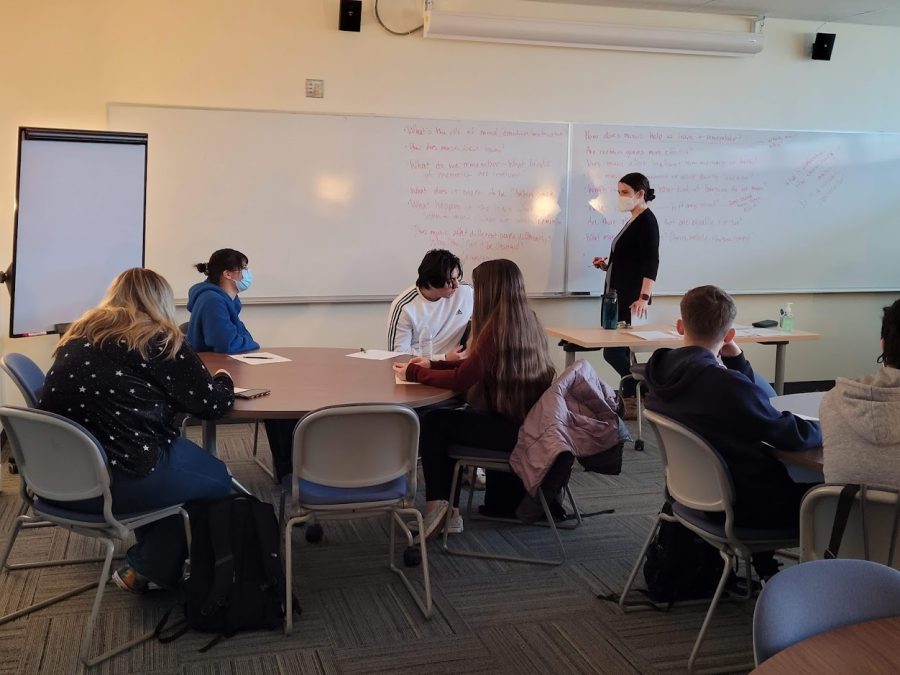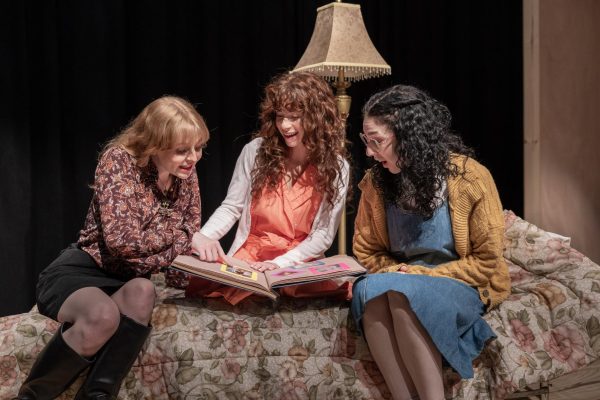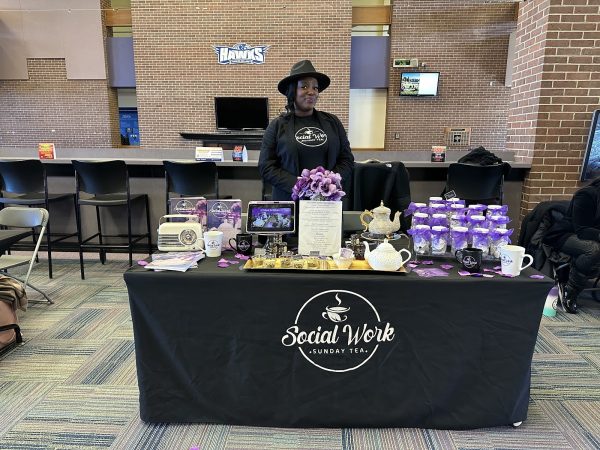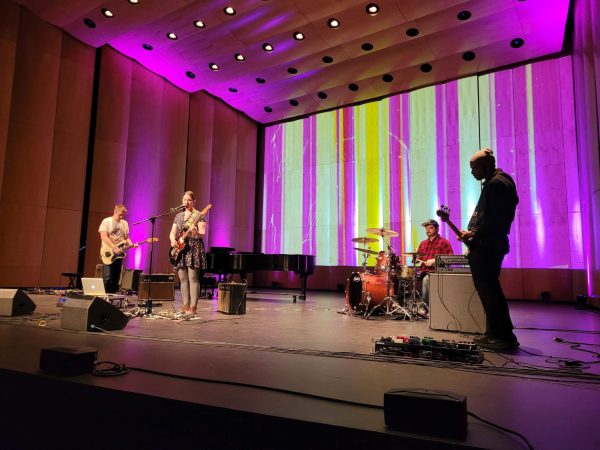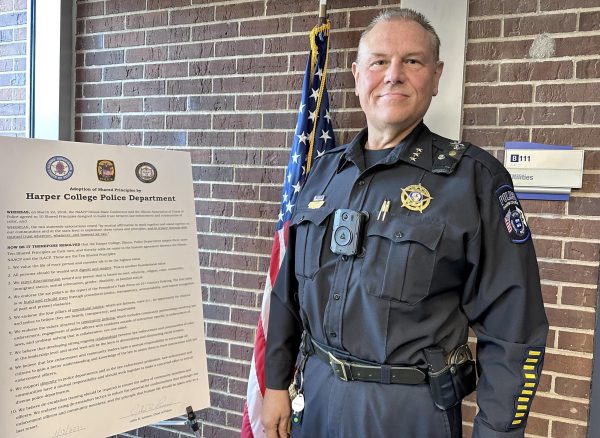Philosophy classrooms get cozy makeover
Classrooms come in all shapes and sizes, but it’s often the case that students find themselves packed together, desk-to-desk and row-to-row, no matter the topic. And while that might work as a catch-all solution for some, professor Rebecca Scott and the rest of Harper College’s philosophy department have decided to change up their approach.
Now, when a class walks into room L-220 at the start of class, Scott doesn’t even need to flip the light switch – the room is kept dim on purpose, lit only by the warm glow of a floor lamp against each wall and sunlight pouring in from the windows.
The students take their seats at round tables, always next to one student and across from another: no more half-hearted mashing of desks together whenever a situation calls for group work. A pair of comfortable armchairs sit in the corner, flanked by shelves loaded with board games, brain-teasers and books combining pop culture with philosophical topics.
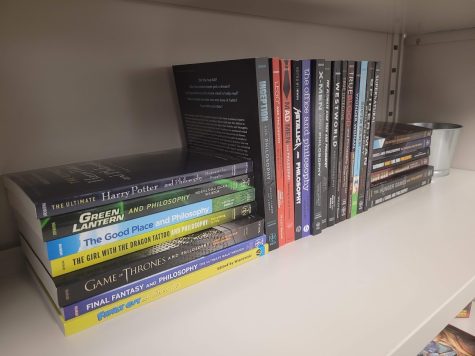
“It creates more of a cozy, coffee shop vibe, which puts people in the right mood to talk philosophy,” Scott says. “You don’t feel like, ‘Oh, I’m in school.’”
After all, Scott has done some of her best teaching in more casual spaces — ones that value moody lighting over harsh fluorescents. Back in 2016 when she was a professor at Elon University in North Carolina, Scott taught a single-credit night course on the “Philosophy of Love” for a handful of students. While the class was assigned its own classroom, Scott – seeing as it was 6:30 p.m. and she had less than 10 people in her class – had her students meet with her in the philosophy department’s common lounge instead.
“We were just all sitting around a table talking about love, and it was just the best experience I could have teaching,” Scott said. “And [at the time] I wished that every class could have that feeling.”
That feeling is exactly what Scott and the philosophy department have tried to capture with this new “philosophy learning lab” initiative, which began to be fully implemented after the return of in-person classes on the Harper campus. Currently, all 46 sections of classes offered by the department take place in one of two learning lab classrooms set aside exclusively for philosophy classes: L-218 and L-220.
Ultimately, the intention behind the project is to curate classroom spaces that are specifically geared to the “active and collaborative” learning environment necessary for a philosophy course. Using the circular tables as an example, Scott remarks that one of the biggest changes she has noticed between the typical classroom setting and the learning lab is a growth in “spontaneous co-teaching,” meaning that students are more active in explaining concepts to their peers when they are grouped together by table.
She believes that this change is not only due to the face-to-face interaction that a round table encourages, but also by the inherent separation that comes from sitting in desks. According to Scott, whereas one student helping another “from over their shoulder” might be viewed as awkward or even invasive anywhere else, keeping them together in groups makes that sort of collaboration feel natural and lends toward a heightened sense of community between the students.
“There’s something about the shared space that makes [working together] more authentic, like people are more willing to buy into it,” Scott said.
The communal nature of the learning lab also helps students feel more comfortable while participating in class discussions. According to Dominic De La Cruz, a student who is currently enrolled in one of Scott’s philosophy classes, this sense of community can encourage the sharing of ideas in more subtle ways, as well.
“In rows and desks, everyone’s just in their own little space. But in a table, if one person’s participating a lot, I feel like it encourages everyone else to participate as well,” De La Cruz said. “And even if it’s just one person speaking up [and answering all the questions, while] everyone else doesn’t, they can still take time to discuss it [all as a group] beforehand … That way, more people can voice their opinions through that other person.”
This is De La Cruz’s first semester of in-person classes at Harper, and his experience in Scott’s class stands in stark contrast to the rest of his schedule. In all of his other classes, he notices that students tend to quietly keep to themselves. De La Cruz himself usually only socializes with classmates who he’s already familiar with outside of class.
Seeing as fostering that strong sense of community is a primary intention of the learning labs, De La Cruz’s testimony is definitely positive feedback. The project — which was spearheaded by Scott and fellow professor Brett Fulkerson-Smith — needed this kind of feedback to get the ball rolling to begin with.
Though this current school year is the first where the labs were fully implemented, the changes were first put to the test in the spring semester of 2020. As illustrated in her report “Does Space Matter?: An analysis of the effects of classroom environment on student and faculty experience,” Scott had her classes split equally between learning labs and traditional classroom settings during this time, and had students take a survey during each of their midterms. These surveys contained both quantitative and qualitative questions, mostly regarding peer-to-peer interactions, the sense of in-class community and the general comfort level around classroom discussion.
The results of these surveys trended in favor of the learning labs; in fact, the responses for all seven qualitative questions (each ranked on a five-point scale) were on average 0.34 points higher in the learning lab classes than their traditional counterparts.
However, that semester was cut short by the onset of the COVID-19 pandemic, which stymied the collection of any further data. While this threw a wrench into their progress just as they were beginning to find their footing, Scott remained optimistic in the face of this unforeseen third type of learning environment: the online course. In many ways, this sudden change only served to highlight how important their project really was to her.
“I do think there are a lot of benefits [to online teaching] in terms of accessibility,” Scott said. “But there’s something about being physically present with other people that you just can’t recreate.”

